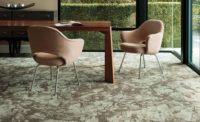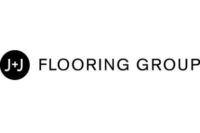J+J Flooring Releases Senior Living Trends Report

J+J Flooring Group released a new trends report that identifies four major drivers of design taking place in the dynamic senior living market.
Developed from ongoing research and insights gleaned at the company’s second annual Senior Living Design Symposium, the report provides practical and thought-provoking considerations for designers charged with creating the next generation of senior living communities.
This year’s J+J Senior Living Design Symposium was coordinated in partnership with Sara Marberry, healthcare design professional. The two-day event held in Santa Fe, N.M., brought together 13 designers from across the country that specialize in senior living. They were joined by noted gerontologist Dr. Anne Simpson from the University of New Mexico and Jane Rhode, one of the country’s best-known advocates for de-institutionalizing elder care residences. Simpson and Rhode served as guest speakers. Like last year’s symposium, attendees were asked to share their ideas and experiences as a way to gather insights into the needs of today’s senior residents and future residents who live active, mobile lifestyles. Attendees were also encouraged to share recent projects they worked on and trends they see emerging.
“Events like our symposium, along with a focus on researching resident care, enable J+J to identify ways in which flooring can positively impact the future of those who live and work in senior living communities,” said David Daughtrey, J+J Flooring's director of healthcare business development. “By proactively tracking emerging trends we are better able to position ourselves as a provider of knowledge and solutions.”
The four key driving trends identified in the report are:
1. Contemporary/Transitional Interiors: Increasingly, the design of senior living communities is being driven to appeal to the secondary customer, the child, rather than the resident. This change is resulting in a transition to contemporary palettes and finishes, while still keeping a timeless appeal.
2. The HGTV Effect: Homeowners and residents are now more confident than ever in their design abilities thanks to popular home interior design shows and digital design boards such as Pinterest. As a result, senior living communities are now offering residents more customization opportunities for their living quarters that more specifically match their design personality.
3. Naturally Neutral: As more contemporary furnishings and finishings are incorporated, an increased use of tinted neutrals and classic shades of ivory are on the rise. These colors combine for a clean, minimalist appeal.
4. Senior Living Model Evolution: Active aging is an ongoing driver in the evolution of the senior living community. Keeping seniors connected to the community, at all stages of aging, has proven to be beneficial both mentally and physically. Yet there is not an established model for the new age of long-term living. What will be the next big evolution to senior living communities? What’s next for the design of these communities?
For more information, visit jjflooringgroup.com.
Looking for a reprint of this article?
From high-res PDFs to custom plaques, order your copy today!






